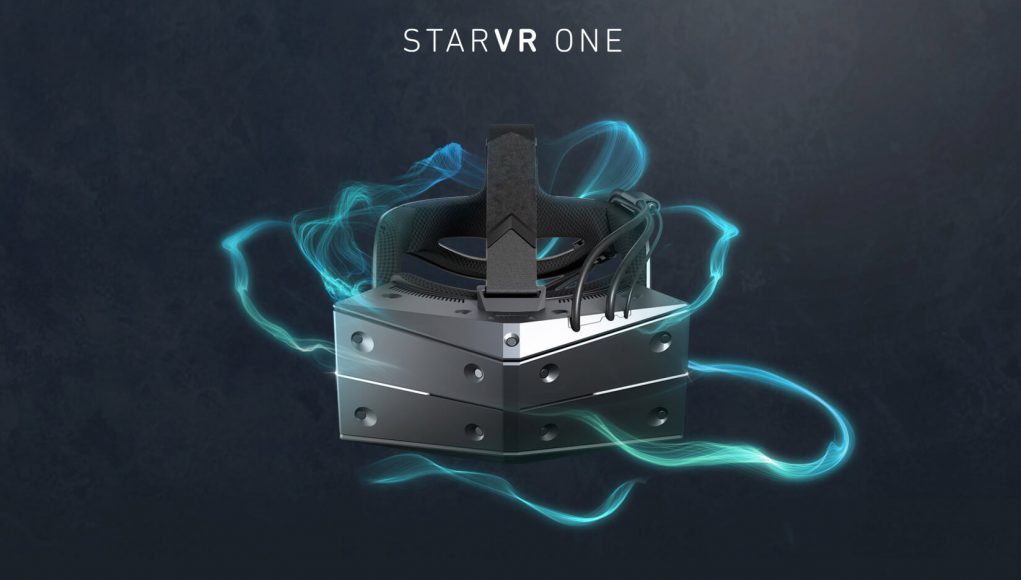StarVR One, the ultra-wide field of view (FOV) VR headset, has traveled a long and winding path on its way to launch since it was first announced in late 2018 that developers and enterprise would be able to apply for hardware. Now the Taipei-based company has detailed price and availability in the US, Europe and Asia.
Update (May 4th, 2020): StarVR has detailed its official pricing, stating that their wide FOV headset is now available for purchase by enterprise customers for $3,200 or €2,800, which includes shipping, but excludes local taxes. The news was first reported by MRTV’s Sebastian Ang.
StarVR tells MRTV that since the headset is a b2b product, that price may skew lower based on order quantity. The company further confirmed that although StarVR One is indeed supported through OpenVR, however the number of viewports needed requires software-side changes for the sake of compatibility.
Furthermore, StarVR tells Ang that it’s headset is strictly meant for qualified enterprise customers, and interested parties will have to go through a selection process first (i.e. no prosumers). The original article follows below.
Original Article (April 9th, 2020): StarVR is now available in Japan and Taiwan through a handful of companies, including ELSA Japan Inc., Cybenet Systems, Access Co, and ASK Corporation in Japan, and Ability International Tenancy Co, Otsuka Information Technology Corp. and Axis3D Technology Co. in Taiwan. Availability in mainland China is marked as “coming soon”.
The news was first reported by Mixed Reality TV’s Sebastian Ang.
Pricing is still unclear, although we wouldn’t expect it to stray too far from its originally quoted $3,200 price tag when it was first offered through the developer program in November 2018 (see update). StarVR’s developer program was however indefinitely put on hold a short time afterwards, which was a direct result of its delisting from the Taipei stock exchange and subsequent reorganization from a public to private entity.
StarVR One, once the result of a partnership between Acer and game developers Starbreeze, is still likely well outside of the reach of consumers, appealing instead to businesses such as VR arcade operators, design firms, and other industrial use cases.
Just the same, when we tried it last back in September 2018 Road to VR Execute Editor Ben Lang was pretty impressed with what he saw:
“From my hands-on time with the headset, StarVR has done a great job of achieving optical comfort. The field of view feels immensely wide, reaching to the ends of your horizontal peripheral vision, without introducing eye-strain or edge distortions that are overtly distracting. The projection of the virtual world feels correct in a way that leaves the user free to soak in the added immersion that comes with such a wide field of view. Getting all of this right is key to Presence—that uniquely deep state of immersion,” said Lang.
The headset’s claim to fame invariably rests on its absolutely massive 210 × 130 degree FOV, dual custom AMOLED displays boasting 1,830 × 1,464 per lens resolution (total of 16 million sub-pixels), and eye-tracking from Swedish firm Tobii.
Check the specs and minimum requirements below:
StarVR One Specs
- Panel – 2 x 4.77” AMOLED
- Display resolution – 1,830 × 1,464 per lens resolution, total 16 million sub-pixels
- Refresh rate – 90Hz low persistence
- Lens type – Custom Fresnel lenses
- Field of view – 210-degree horizontal FOV, 130-degree vertical FOV
- Eye-tracking – Fully integrated Tobii eye-tracking, including Dynamic Foveated Rendering
- IPD measurement – in-software solution
- Tracking – SteamVR tracking 2.0 up to two Base Stations
- Connectivity – 2 x 0.9m Type-C cables, 2 x 5m Type-C extension cables, 1 x 3.5mm stereo headphone jack with microphone
- Port requirements – 2 x DisplayPort, 2 x USB 2.0
- Total cable length – 5.9m
Minimum System Requirements
- Operating system – Windows 10 64bits
- Processor – Intel core i7-7700
- Memory – 16GB
- Graphics – NVIDIA GeForce GTX 1080Ti or NVIDIA Quadro RTX5000/dedicated internal graphics card







